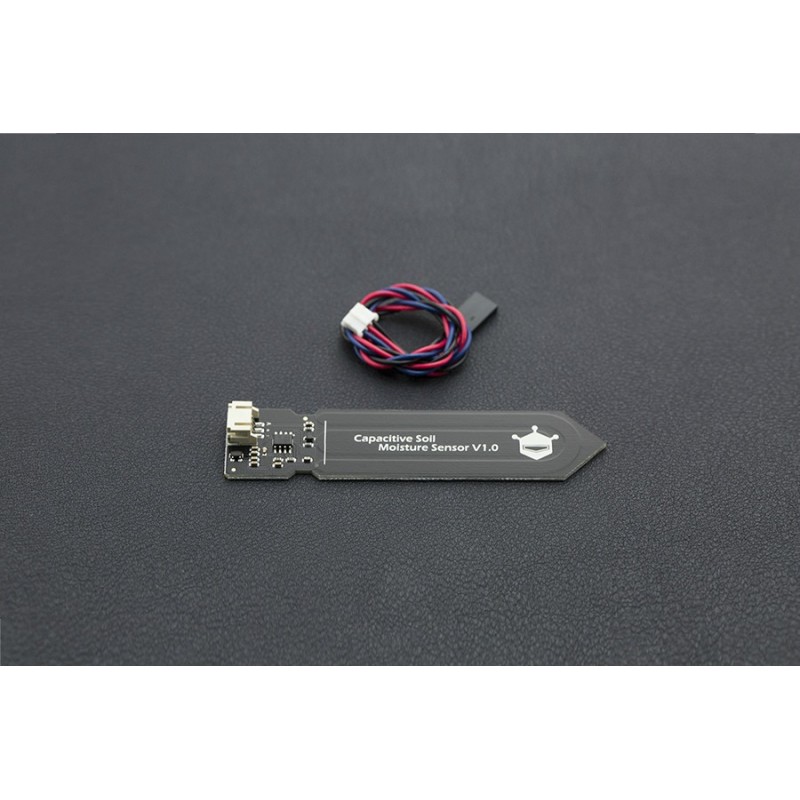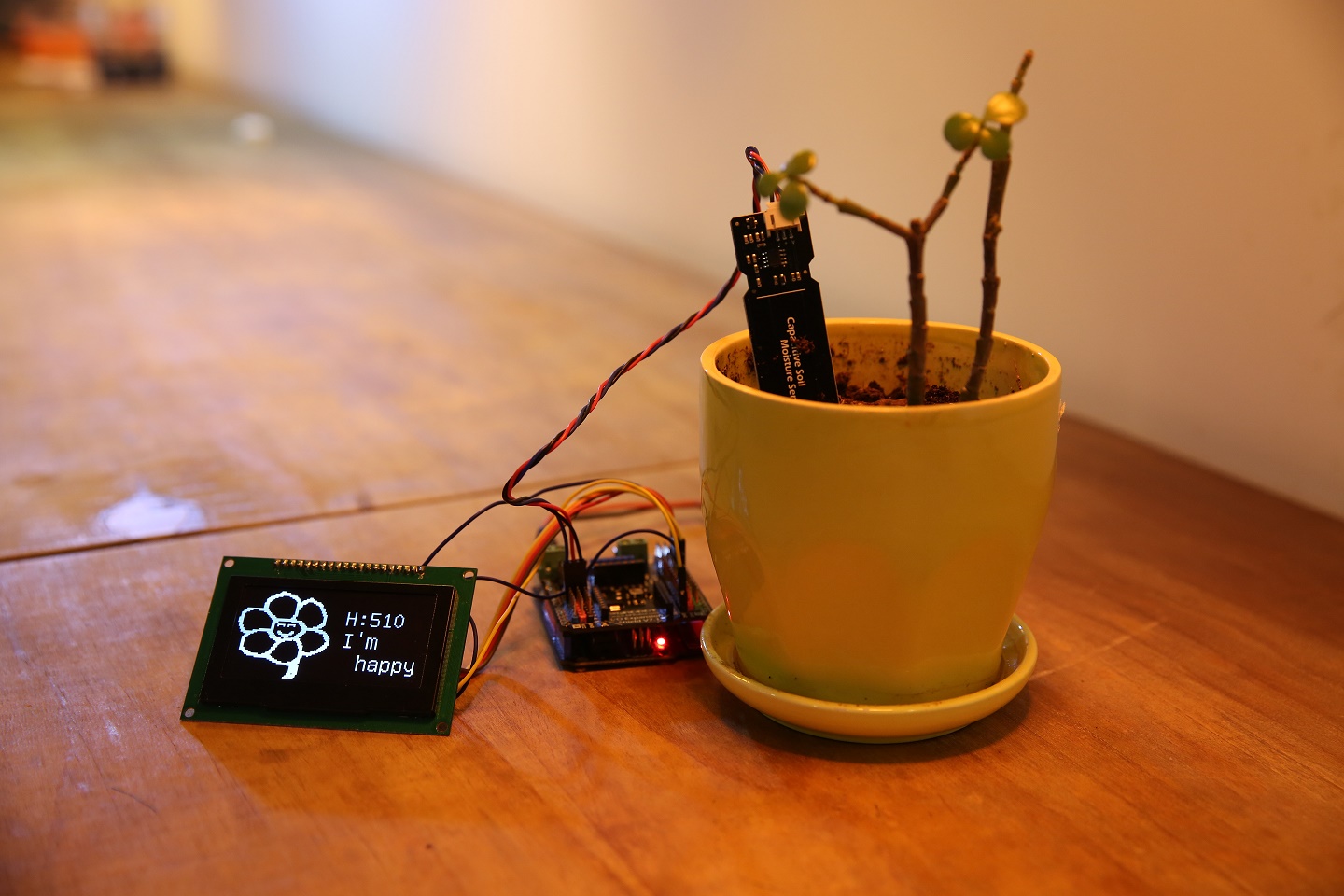

No products in the cart.


Capacitive Soil Moisture Sensor- Corrosion Resistant
This product measures soil moisture levels by capacitive sensing, rather than resistive sensing like other types of moisturesensor. It is made of a corrosion resistant material giving it a long service life. Insert it into soil and impress your friends with the real-time soil moisture data!
The product includes an on-board voltage regulator which gives it an operating voltage range of 3.3 ~ 5.5V. It is compatible with low-voltage MCUs (both 3.3V and 5V logic). To make it compatible with a Raspberry Pi, an ADC converter is required.
This sensor is compatible with our 3-pin "Gravity" interface, which means it can be directly connected to the Gravity I/O Expansion Shield.
The following image shows an example project - a device that notifies you when a plant needs to be watered.

Hardware Components:
Particle Photon Project 2: Annoying Soil Moisture Sensor with Photon and IFTTT Project
Never forget to water your plants again with this super annoying project. It combines visual, auditory, and textual cues that will prevent you from doing anything else until you provide your plant with much-needed hydration. A piezo buzzer constantly blares a shrill note, while a super-bright LED annoys your peripheral vision. In addition, this project will send constant texts to your phone reminding you that your plant needs to be watered. Sounds like fun, right?
Hardware Components:
Project 3: OBLOQ-IoT Module +Micro:bit IoT Flower Watering
Hardware Components:
Projects Project 1. Wireless Soil Moisture Probe with Helium and DFRobot
Plants die all the time from lack of watering. You're busy and those ferns aren't going to raise their hands when feeling parched. So, for the plant enthusiast on the go, this prototype soil moisture probe is your ticket to happy and healthy ferns and ficus.
Hardware list:
Constructing your complete soil moisture probe using the Gravity Capacitive Soil Moisture Sensor, a Helium Atom Prototyping Module, a Helium Arduino Adapter, and an Arduino UNO